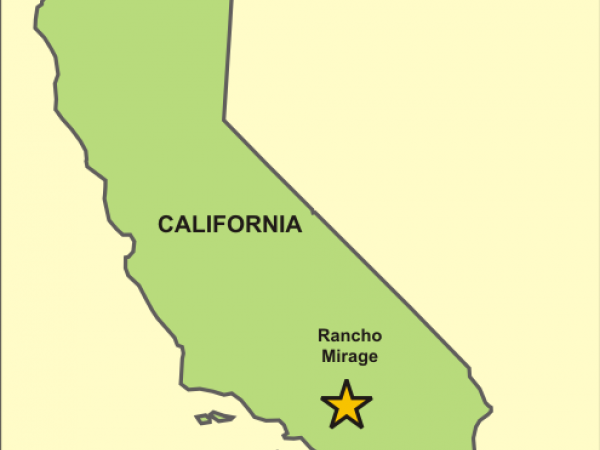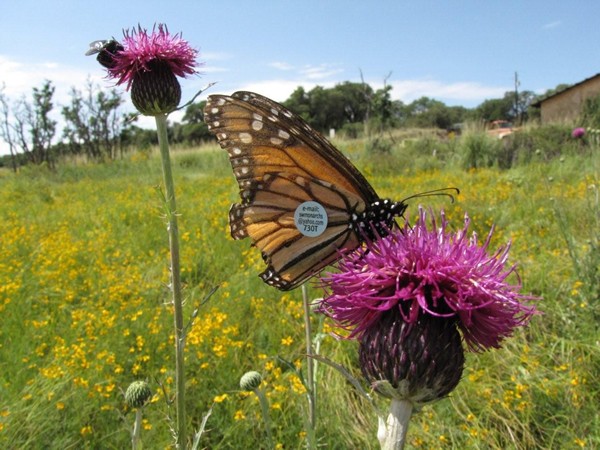Western Monarchs 2019 Spring Report#4
Visiting Southern California Low Desert
By Gail Morris
February 13, 2019
Looking for Monarchs!
Not all western monarchs spend the winter along the California coast. Small numbers of monarchs are reported throughout the winter in southern California’s Low Desert. This week let’s visit Sunnylands Center and Gardens in Rancho Mirage, California in the Sonoran Desert.
Michaeleen Gallagher is the Director of Education and Environmental Programs at Sunnylands. For the last five years, Michaeleen has trained volunteer citizen scientists to tag monarchs in the Fall, but this year, she wanted to learn more about monarchs that remain in the desert environment during the winter months before desert temperatures rise and monarchs leave the area. In collaboration with Southwest Monarch Study and the Monarch Joint Venture (who funded the study), Michaeleen organized a training workshop to educate staff and volunteers to monitor and tag monarchs from Fall through late Spring.
As Michaeleen notes: “We have created a strong team of grounds workers who understand, and fully support the project. They communicate any issues they are seeing in the Asclepius patches. Because this is an art garden, we do daily maintenance, but we have an understanding that we will make decisions in these areas with Monarchs in mind. Plants will not be removed or replaced without first determining if there are eggs and larvae. We will preserve this space as a sanctuary for these butterflies and use it as an opportunity to educate the public.”
Michaeleen and her team monitor on Wednesday mornings when the center is open to the public allow center volunteers to engage and educate a larger population.
What did they find this week?
A monarch gold mine! Together Michaeleen and her team of volunteers found 49 eggs, 1 2nd instar larva, 4 3rd instar larvae, 5 4th instar larvae and 2 5th instar larvae in 3 hours of searching their large native Asclepias subulata milkweed patch. But there was more exciting news.
As Michaeleen commented, “After weeks of crawling on hands and knees to count what is on the ground, yesterday this new group of volunteers looked up and spotted an adult Monarch. A quick chase to the patch of Asclepius where she seemed to be heading and a swoop of the net, and they were able to participate in their first tagging. Very exciting! Our newest tag is a female number AL847. She was tagged at 11:40 a.m. was in fair condition with a few small wing tears, but all in all in good condition.”
By tagging monarchs in the spring, Michaeleen and her team hope to learn if monarchs are staying or moving through the desert region. Sunnylands and partners including the Southwest Monarch Study will continue to study and learn more about monarchs breeding areas in the Southwest. Help these and other efforts by reporting your sightings to Journey North.
Please Report Your Sightings
Help us to find answers to these and other questions. Let’s keep following monarch population movements in the West. Please join Journey North and our partners who care deeply about the western monarch butterfly population to help track monarchs. Report your sightings on Journey North – sightings can include first adult monarchs, eggs, larvae, and first milkweed emergence.
The Western Monarch Population News is based on comments provided to Gail Morris. We hope to increase the number of sightings and therefore photos and comments entered into the Journey North. At present, we rely on the volunteers who communicate regularly with Gail and who agree to participate in our effort to increase awareness of the population of western Monarchs.


